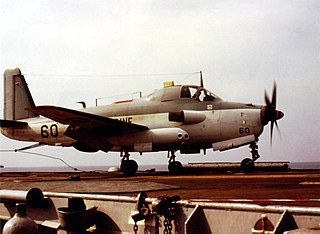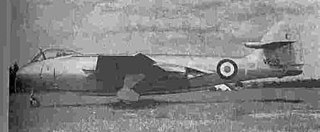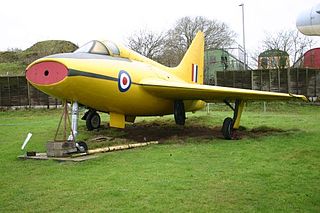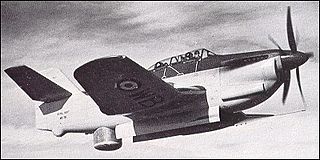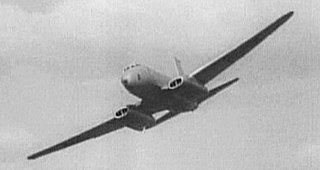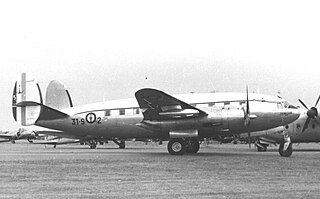This article needs additional citations for verification .(July 2011) (Learn how and when to remove this template message) |
| Vultur | |
|---|---|
| Role | Ground-attack aircraft |
| Manufacturer | Breguet Aviation |
| First flight | 3 August 1951 |
| Number built | 2 |
| Developed into | Breguet Alizé |
The Breguet Br.960 Vultur was a French prototype carrier-based attack aircraft that first flew on 3 August 1951. Only two examples were built, but the work done on them later proved useful in the development of the Breguet Alizé anti-submarine warfare aircraft.

France, officially the French Republic, is a country whose territory consists of metropolitan France in Western Europe and several overseas regions and territories. The metropolitan area of France extends from the Mediterranean Sea to the English Channel and the North Sea, and from the Rhine to the Atlantic Ocean. It is bordered by Belgium, Luxembourg and Germany to the northeast, Switzerland and Italy to the east, and Andorra and Spain to the south. The overseas territories include French Guiana in South America and several islands in the Atlantic, Pacific and Indian oceans. The country's 18 integral regions span a combined area of 643,801 square kilometres (248,573 sq mi) and a total population of 67.3 million. France, a sovereign state, is a unitary semi-presidential republic with its capital in Paris, the country's largest city and main cultural and commercial centre. Other major urban areas include Lyon, Marseille, Toulouse, Bordeaux, Lille and Nice.

A prototype is an early sample, model, or release of a product built to test a concept or process or to act as a thing to be replicated or learned from. It is a term used in a variety of contexts, including semantics, design, electronics, and software programming. A prototype is generally used to evaluate a new design to enhance precision by system analysts and users. Prototyping serves to provide specifications for a real, working system rather than a theoretical one. In some design workflow models, creating a prototype is the step between the formalization and the evaluation of an idea.

An aircraft carrier is a warship that serves as a seagoing airbase, equipped with a full-length flight deck and facilities for carrying, arming, deploying, and recovering aircraft. Typically, it is the capital ship of a fleet, as it allows a naval force to project air power worldwide without depending on local bases for staging aircraft operations. Carriers have evolved since their inception in the early twentieth century from wooden vessels used to deploy balloons to nuclear-powered warships that carry numerous fighters, strike aircraft, helicopters, and other types of aircraft. While heavier aircraft such as fixed-wing gunships and bombers have been launched from aircraft carriers, it is currently not possible to land them. By its diplomatic and tactical power, its mobility, its autonomy and the variety of its means, the aircraft carrier is often the centerpiece of modern combat fleets. Tactically or even strategically, it replaced the battleship in the role of flagship of a fleet. One of its great advantages is that, by sailing in international waters, it does not interfere with any territorial sovereignty and thus obviates the need for overflight authorizations from third party countries, reduce the times and transit distances of aircraft and therefore significantly increase the time of availability on the combat zone.





